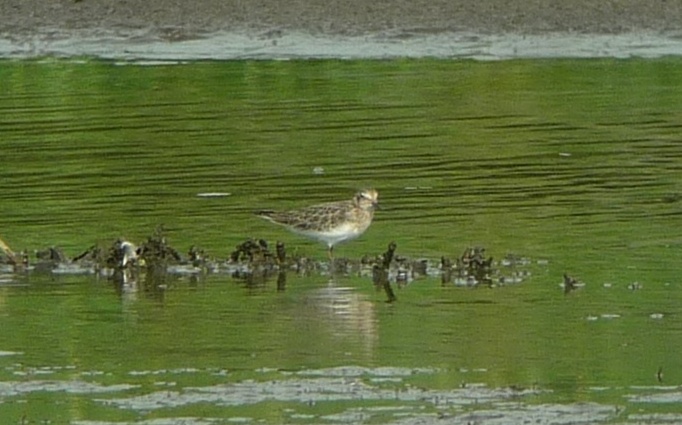Temmincks Strandloper
Calidris temminckii · Temminck's Stint
 Temmincks Strandloper ·
Calidris temminckii
·
28-08-2013 · John van der Woude
Temmincks Strandloper ·
Calidris temminckii
·
28-08-2013 · John van der Woude
| Datum | 28 August 2013 |
|---|---|
| Locatie | Groene Jonker, ZH |
| Fotograaf |
|
| Bekeken | 7312 × |
| Calidris spec. Zie svp nog 10 foto's op http://www.jvanderw.nl/misc/calidris.html Heb hem ook gemeld op dbalerts. Spannende kleine Calidris met lichte poten (3 soorten...). Witte wenkbrauwstreep tot snavel reikend. Opvallende wangvlek aan één zijde, minder opvallend aan andere zijde. Borst wel tamelijk scherp begrensd. Fourageergedrag niet zoals bedachtzame Temminck. Bij wegvliegen helaas staartzijden niet goed kunnen zien. Witgat op de foto's ernaast voor groottevergelijking. |
Discussie
René van Rossum
·
29 August 2013 11:49
Max Berlijn
·
31 August 2013 17:54
Richard Reijnders
·
31 August 2013 22:45
John van der Woude
·
3 September 2013 18:26
John van der Woude
·
6 September 2013 11:26
Peter de Knijff
·
6 September 2013 11:44
Max Berlijn
·
9 September 2013 22:11
Frank van der Meer
·
9 September 2013 22:50
Max Berlijn
·
10 September 2013 07:48, gewijzigd 10 September 2013 07:49
Richard Reijnders
·
10 September 2013 09:34
Frank van der Meer
·
10 September 2013 13:00
Richard Reijnders
·
10 September 2013 14:48, gewijzigd 10 September 2013 14:54
John van der Woude
·
10 September 2013 15:36
Peter de Knijff
·
10 September 2013 16:00
Max Berlijn
·
10 September 2013 17:01, gewijzigd 10 September 2013 17:02
John van der Woude
·
10 September 2013 18:50
Gebruikers van het forum gaan akkoord met de forumregels.
